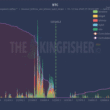Bitcoin demonstrated notable stability during the June 13 U.S. trading session, defying sharp volatility in traditional markets as conflict intensified in the Middle East. Despite a rapid dip after news of Israeli and Iranian military actions, BTC swiftly rebounded, closing near the $105,000 threshold and reaffirming its growing resilience as a digital asset.
BTC Withstands Market Shocks as Geopolitical Risks Escalate
Heightened hostilities between Israel and Iran set off a cascade of volatility across global financial markets on June 13. After Israeli airstrikes on Iranian military and nuclear sites were followed by retaliatory drone and missile attacks from Iran, risk assets worldwide sold off. Bitcoin, sensitive to macro shocks, slid nearly 5% in after-hours trading, dipping close to $102,000. Yet, as Asian markets opened, the cryptocurrency staged a strong recovery, regaining ground above $104,000 and spending the bulk of the U.S. session trading in a narrow window between $104,500 and $105,600—even as equity markets faltered.
Safe-Haven Assets Surge, Oil Climbs on Supply Fears
While Bitcoin demonstrated bounce-back strength, investors flocked to traditional safe havens. Gold surged over 1%, and the U.S. dollar, yen, and Swiss franc all recorded notable gains. Brent crude oil soared nearly 8% amid concerns that further escalation could threaten energy supplies from the region. Traditional markets struggled under the weight of uncertainty, underscoring the risk-off mood gripping investors.
Key Stats & Figures
- BTC Price (June 13): Hovered around $105,600, closing the day down just 0.11% despite initial turmoil
- Intraday Low: Bitcoin dropped to nearly $102,000 after reports of Israeli action, before rebounding
- Gold Performance: Spot gold rose over 1% as investors sought safety amid market uncertainty
- Oil Price Spike: Brent crude jumped nearly 8% on fresh worries of supply disruptions linked to Middle East instability
Analysis: Patterns of Resilience and Institutional Support
Analysts point out that Bitcoin’s rebound, despite global market jitters, signals underlying institutional confidence and persistent macroeconomic support. The swift recovery resembled previous patterns, including a notable rally after the October 2024 Iran–Israel crisis. Some market watchers cite the emergence of an “80% rally setup,” referencing similar historical movements during times of heightened geopolitical risk. At the same time, oil’s surge may introduce headwinds for risk assets, but a shifting outlook on interest rates—particularly in light of Federal Reserve actions—could provide new momentum for crypto markets as investors reassess strategies.
Conclusion: What This Means for the Market
Bitcoin’s ability to shake off a steep, uncertainty-driven drop and hold near $105,000 as global equities faltered underscores its evolving role and resilience in the financial landscape. While Middle East tensions continue to fuel market nervousness, BTC is benefitting from institutional backing, favorable price patterns, and macroeconomic trends. How the situation develops—and the impact on commodities and central bank policy—remains crucial for traders watching Bitcoin’s next move.
